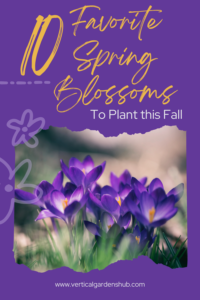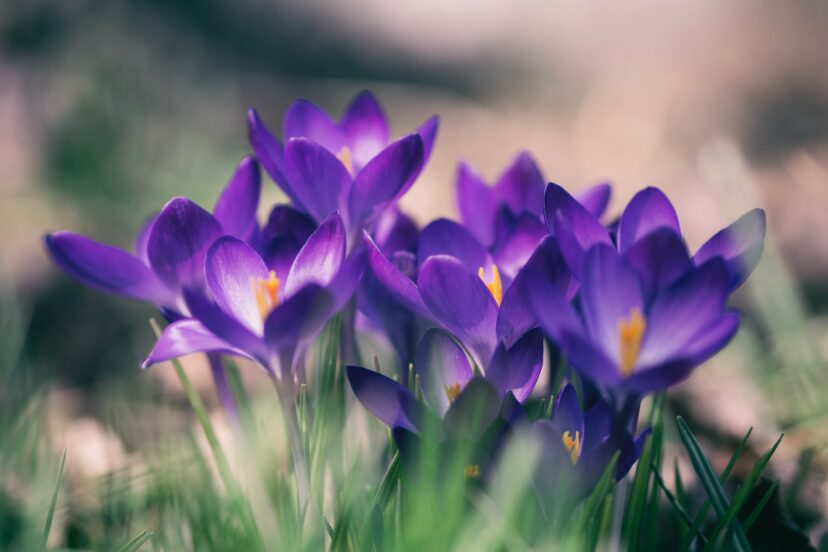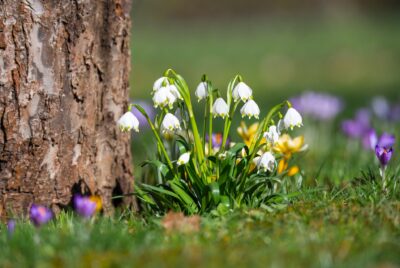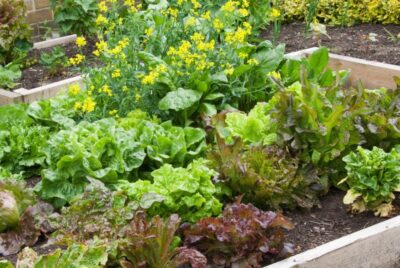Best Bulbs to Plant in Fall: Ten Stunning Spring Blossoms
Fall is the time to start planning and picking the best bulbs to plant in fall for next spring’s blooms. Bulbs require cold temperatures below freezing to bloom well. Most bulbs will return year after year, making them an investment in your garden and a nice surprise of color when the temperatures start to warm.
In this Article
- Why Plant Bulbs in the Fall?
- Selecting the Right Bulbs
- Planting Techniques
- Caring for Fall-Planted Bulbs
- Benefits of Fall Bulb Planting
- Ten Popular Fall Bulb Varieties
- Creative Bulb Combinations
- Preparing for Winter
- Final Thoughts
Why Plant Bulbs in the Fall?
The best bulbs to plant in fall really depend on what planting zone you are in. (Find your zone here) Fall is an ideal season for planting bulbs because the soil is still warm, allowing them to establish strong root systems before the first freeze – roughly 6-8 weeks before. When spring arrives, these bulbs burst into a field of colors, adding vibrancy to your garden.
Selecting the Right Bulbs
Spring-Flowering Bulbs: Fall is the time to plant bulbs that will grace your garden with stunning spring blooms. Tulips, daffodils, and crocuses are among the top choices.
Summer-Flowering Bulbs: While most bulbs are planted in the fall for spring blooms, some summer-flowering bulbs like dahlias and lilies can also be planted during this season.
Ideal Planting Time
Temperature Considerations: Wait until the soil temperature drops to around 60°F (15°C) before planting or 6-8 weeks prior to the first freeze in your area. This ensures that the bulbs don’t start growing prematurely.
Soil Preparation: Provide the soil with organic material to improve drainage and fertility. Well-drained soil is essential for healthy bulb growth.
Planting Techniques
Depth and Spacing: The general rule of thumb is to plant bulbs at a depth of three times their height. Place the bulb pointy side up and cover it with soil. Follow the planting instructions on the bulb packaging for specific guidelines.
Sunlight Requirements: Most bulbs thrive in full sun or partial shade. Be mindful of the sunlight requirements of the bulbs you choose. They tend to prefer full sun or a spot that gets about 6 hours of direct sunlight
Caring for Fall-Planted Bulbs
Watering: Bulbs need adequate moisture to establish roots. Water thoroughly after planting and provide consistent moisture throughout the fall.
Mulching: Mulch the soil to maintain a consistent temperature and moisture level. This also helps protect the bulbs from freezing temperatures.
Pest Control: Keep an eye out for pests like squirrels and voles, which may dig up bulbs. Consider using protective measures like wire mesh. Or you can plant daffodils bulbs on top of other desirable bulbs.
Benefits of Fall Bulb Planting
Extended Blooming Period: By planting a variety of bulbs, you can enjoy continuous blooms from early spring to late spring, creating a captivating display.
Robust and Healthy Plants: Fall planting allows bulbs to establish strong root systems, resulting in healthier and more resilient plants.
Early Spring Color: Nothing beats the joy of seeing your garden burst into color early in the spring when the rest of the landscape is still waking up from winter.
Ten Popular Fall Bulb Varieties
Tulips: Tulips come in a wide range of colors and sizes, making them a garden favorite. They add a touch of elegance to any landscape and are a favorite when cut and brought inside.
Daffodils: Daffodils are known for their cheerful yellow blooms and are also deer-resistant, making them an excellent choice for many gardens.
Crocuses: Spring is near when you see crocus flowers in your garden. These petite flowers are among the earliest to bloom, often pushing through the snow.
Allium: Related to the onion family, these sun loving blooms come in all shapes and sizes. Some can grow tall with a flower as big as a softball. No deadheading needed.
Hyacinth: Hyacinths come in many colors with an incredible fragrance and blooms that last for weeks. Pollinators love this compact flower in your garden.
Anemone: Also called windflowers, these masses of star-like flowers appear in mid-spring and last about 4 weeks. They prefer part shade but can grow in full sun with moist soil. Are deer and rodent resistant.
Dwarf Iris: These are tiny gems that appear very early to mid-spring. They need full sun and are great border plants.
Bluebells: Bluebells are bell-shaped flowers needing part sun. Planted under large deciduous trees in large bunches really makes a statement. Bloom from mid-spring to early summer.
Starflower: A favorite of bees, this star-shaped flower gives off a spicy scent. Grows up to 10 inches and becomes dormant after blooming. Plant in masses and in full sun.
Snowdrop: Appearing in late winter or early spring, they look best planted in masses. These tiny European wildflowers need full sun and are deer and rodent resistant.
Creative Bulb Combinations
Layering Bulbs: Create stunning displays by planting bulbs at different depths. For example, plant tulips deep and crocuses shallow for a layered effect.
Naturalizing Bulbs: Plant bulbs in a naturalized way, allowing them to spread and multiply over the years, creating a more natural look in your garden.
Preparing for Winter
Protecting Bulbs from Frost: In regions with harsh winters, consider adding a layer of mulch or a frost blanket to protect bulbs from frost heaving.
Storing Bulbs: If you have excess bulbs or need to lift and store them, do so carefully to ensure they remain healthy and viable.
Final Thoughts
Planting bulbs in the fall is a rewarding endeavor that brings a burst of color and joy to your garden in the spring. With the right selection, planting techniques, and care, you can create a garden that’s alive with vibrant blooms.

FAQs
Q: When is the best time to plant fall bulbs?
Fall is the best time to plant fall bulbs, ideally when the soil temperature is around 60°F (15°C).
Q: Can I plant bulbs in containers?
Yes, you can plant bulbs in containers, but ensure they have proper drainage and provide winter protection if necessary.
Q: What is naturalizing?
Naturalizing refers to planting bulbs in a way that allows them to multiply and spread over time, creating a more natural-looking display.
Q: Do bulbs need fertilizer?
Most bulbs don’t require additional fertilizer at planting time, as they store their own nutrients.
Q: Can I plant fall bulbs in a region with harsh winters?
Yes, you can plant fall bulbs in regions with harsh winters but take extra precautions to protect them from frost and freezing temperatures.





